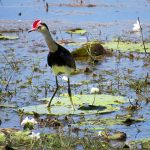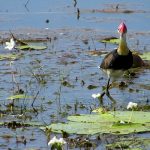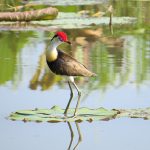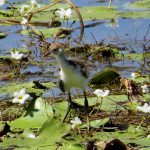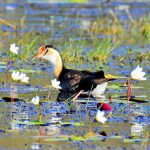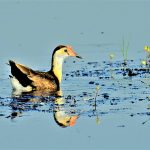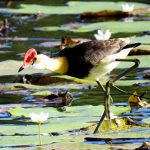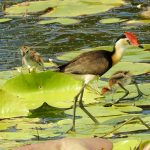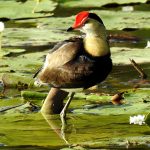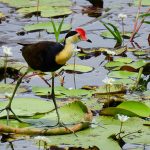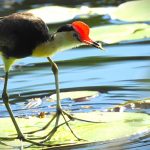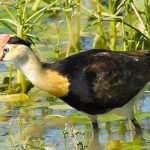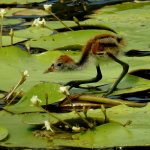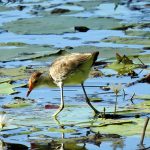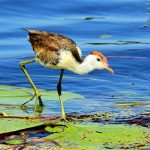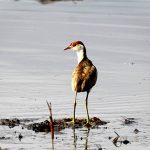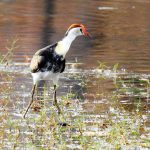COMB-CRESTED JACANA
Comb-crested Jacanas are small to medium-sized birds with striking and unique physical characteristics. They have long legs and exceptionally long toes, which allow them to walk on floating vegetation and aquatic plants without sinking. Their plumage is mostly brown, with distinctive black markings on their wings and back. The most prominent feature is their “comb,” which is a forward-curving, fleshy, and prominent crest on top of their head. They communicate with a squeaky, high-pitched chittering.
These birds are highly adapted to wetland environments, such as freshwater lakes, ponds, swamps, and marshes. They are often seen walking on the floating vegetation, including water lilies and other aquatic plants.
Comb-crested Jacanas are primarily insectivorous and feed on a variety of small aquatic invertebrates, insects, and their larvae. Their long toes and specialized feet enable them to delicately tread on the water’s surface while searching for food.
One of the most fascinating aspects of Comb-crested Jacanas is their unique breeding behavior. They are polyandrous, meaning that the females are larger and more brightly colored than males and typically mate with multiple males. It is the males who take on the primary responsibility of incubating the eggs and caring for the chicks. Females often leave the males to find another mate and lay more eggs, while the males continue to care for the young.
In Australia, Comb-crested Jacanas are primarily found in the northern parts of the country, including northern Queensland and the Northern Territory. They are also found in other parts of Southeast Asia and the Pacific region.
Like many wetland-dependent species, they are vulnerable to habitat loss and degradation due to factors such as land reclamation, pollution, and water management practices.

